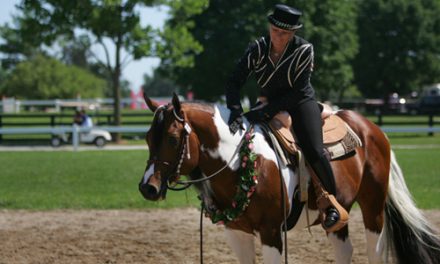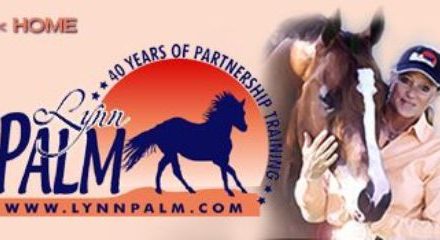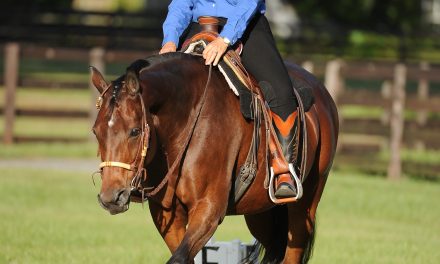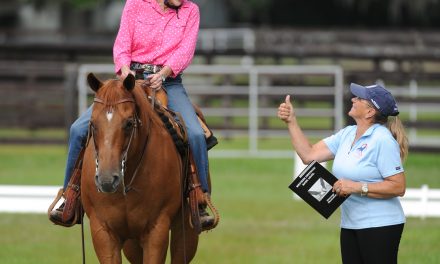Building A Partnership With Your Horse
 In the last article, I talked about how to prepare for and have a picnic trail ride. Another fun activity to share with your horse on the trail is a cookout. It requires a little bit more preparation and planning because a larger meal is prepared and it requires a fire. You will also need more cold gel packs. Do not let food poisoning spoil a trail ride cookout! The preparation for a cookout is the same as for a picnic in regards to warming up both the horse and the rider.
In the last article, I talked about how to prepare for and have a picnic trail ride. Another fun activity to share with your horse on the trail is a cookout. It requires a little bit more preparation and planning because a larger meal is prepared and it requires a fire. You will also need more cold gel packs. Do not let food poisoning spoil a trail ride cookout! The preparation for a cookout is the same as for a picnic in regards to warming up both the horse and the rider.
The same packing principles apply for a cookout that we covered in the picnic article. Tack up your horse with a halter underneath or over his bridle, and attach a lead rope and put it securely around his neck. As before, pack the heaviest items in the bottom of the saddle bags, balance the weight between saddle bags, and pack heavier items over the horse’s withers area.
The hardest thing to transport on horse back is a grill top. If you must bring one, use the quietest horse to carry it. Wrap the grill in a large piece of cloth so it cannot scratch the horse or the saddle. Tie it high on the back of the saddle so it hangs very close to the saddle skirts.
It makes a trail ride cookout easier if you plan to have a meal that does not require a grill top. For example, hot dogs or shishkabobs can be cooked on sticks gathered from the woods or on skewers (don’t forget pot holders or oven mitts if you are using metal).
Be creative with your meal.
Here is my basic packing list for a trail ride cookout:
Matches
Paper for starting the fire
Water (1/2 to 1 gallon minimum)
Knife (a jackknife is perfect) for cutting sticks
Can opener, if needed (or a jackknife with a can opener option)
Plates, cups, and utensils
Cooking grill, pots, or aluminum foil
Food and beverages with cool gel pack to keep items cold
First aid kit
Cell phone (for emergencies only please—we’re on a trail ride to get away from it all!)
Map of the area, if needed
Bug repellent for humans and horses
Toilet paper
Handy wipes for easy cleanup
Because a cookout requires a fire, select a destination where a fire is permitted and where there is plenty of wood available. If possible, try to find a location with a water supply like a stream or a lake. This water can be used to douse the fire when the cookout is finished and to water the horses if it is safe for them to drink. If the cookout location is not near water, then you must haul in water to douse the fire. For a cookout trail ride of typical duration, there is no need to bring anything for the horses to eat or drink unless it is very warm.
When you reach the cookout destination, find a tree to tie the horses to. Because the halter and lead are already on the horses, you will not have to change tack. Select a spot to tie them where there is enough room between horses so that they cannot touch. Always tie the lead rope high. The knot should be at ear level of the horse. Always use a slipknot, putting the end of the lead through the slipknot so the horse cannot pull on the end and untie himself. The length of the lead between the tree and the horse is also very important. It should be taut at the horse’s natural head level. If he is tied lower than that, he could get a leg over the lead. Secure the reins so that the horse cannot get them over his head or step through them. (If your horse is new to being tied like this, follow the instructions in the previous article on a trail ride picnic.)
The heart of the cookout is the fire. Not only is it used for cooking, but it also provides a nice camp-like atmosphere. There is an art to building a good cookout campfire. Find a spot away from dry brush, grass, or overhanging branches. Select a couple dozen large rocks and arrange them in a circle about two feet in diameter. This will be the campfire ring and the support for the grill. Make sure the rocks are large enough so that when the grill is placed on them there will be just the right distance from the fire for the food to cook but not burn.
Starting a fire can be intimidating. Think of it like you are feeding a baby—it must be fed smaller food first before it can eat larger pieces. The small food for a fire is the starting material and thin twigs called “tinder.” These quickly catch fire, but they will not burn for long. The larger pieces are branches and logs. They need the quick hot flames from the tinder to catch fire but, once they do, they continue to burn longer and make coals on which to cook.
Once you have your tinder and logs neatly arranged, you are ready to start the fire. Inside the fire ring, place a medium-sized log on the ground. Between the log and the ground, put the paper you brought with you, crumpled up. Place the driest, thinnest tinder on top of the layer of fire starting material. Add enough tinder so the fire will have something to consume once the paper is burning, but do not add so much that the fire will not be able to get enough oxygen.
Light the paper. Once the first flames ignite, be ready to put more small twigs into the flames. As soon as the twigs are burning, gradually add larger sticks of wood until log-sized pieces are burning. As the fire burns, it will create the coals to cook over. Keep a supply of water close at hand to douse the fire in case of an emergency.
After the meal is complete, douse the campfire carefully. Let the fire die down naturally and separate the logs within the fire ring. Splash water over the coals and logs. Never pour water on a hot fire because it can produce enough steam to cause serious burns. As the fire subsides, add more water and stir the fire to put out all of the coals. When you think the fire is completely out, carefully feel it to make sure that the temperature inside the fire ring is cool and that there are no hidden hot spots or coals. If loose soil is available, it can be shoveled over the fire ring to smother the coals.
Remember to use good outdoor courtesy on a trail ride cookout. Ask permission if crossing private land. Take out everything you packed in, especially garbage. Try to leave the cookout spot in as natural a condition as you found it.
Clean up and carefully pack up for the ride home. Take one more look around to make sure the fire is completely out and that nothing has been left behind. Then it is time to mount up and ride back home, full of good food and great memories of the cookout trail ride.
My E-Book, Training Outside the Box, along with other valuable training products, is available by calling 800-503-2824 or at www.lynnpalm.com





